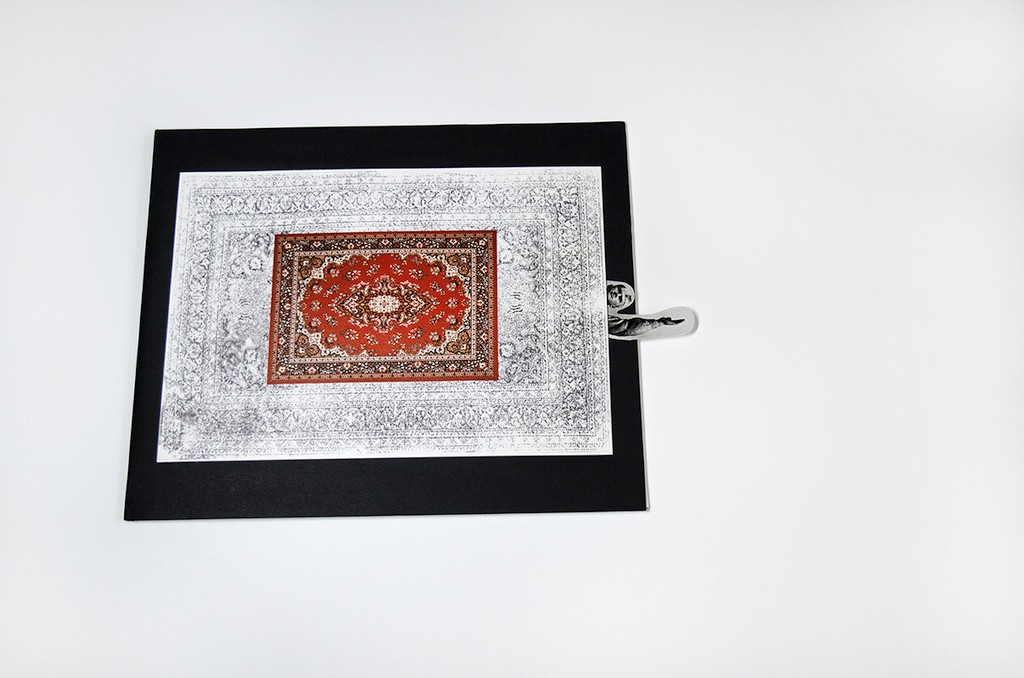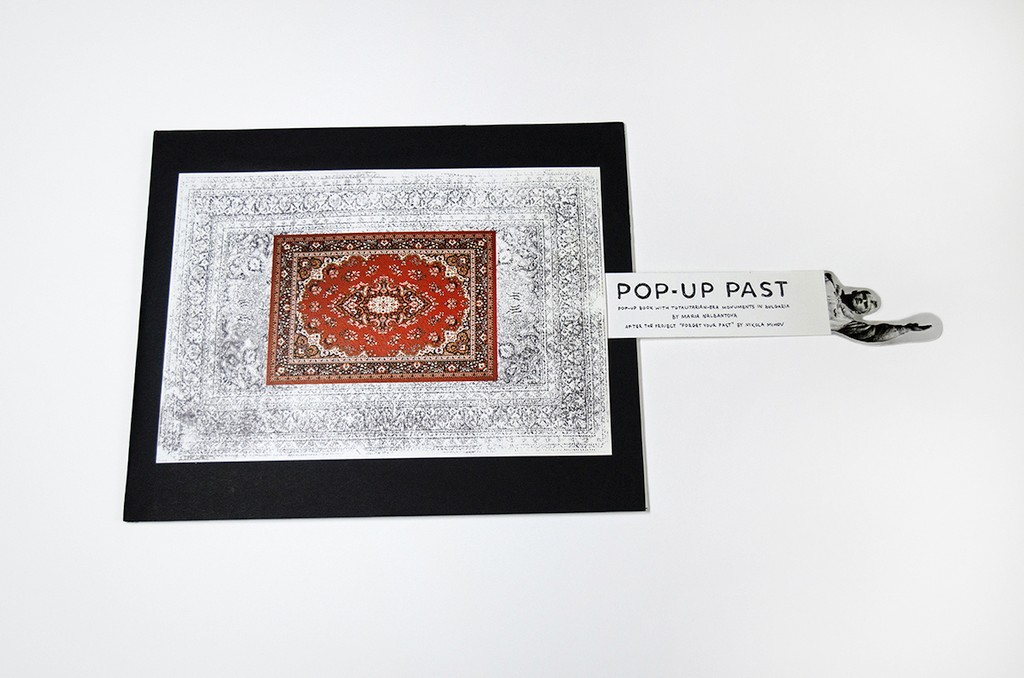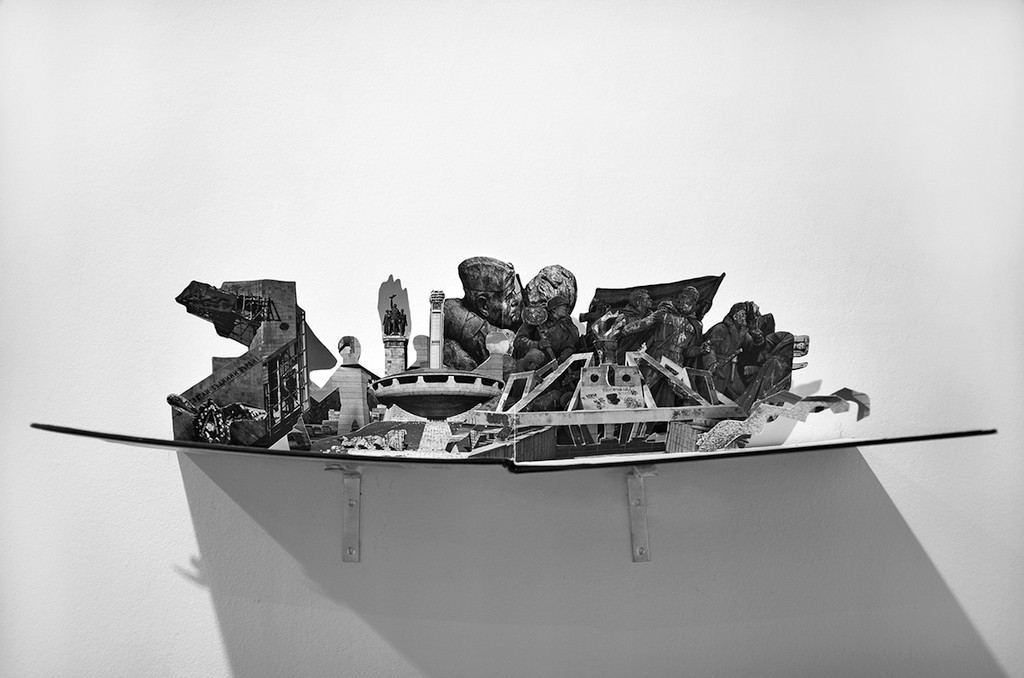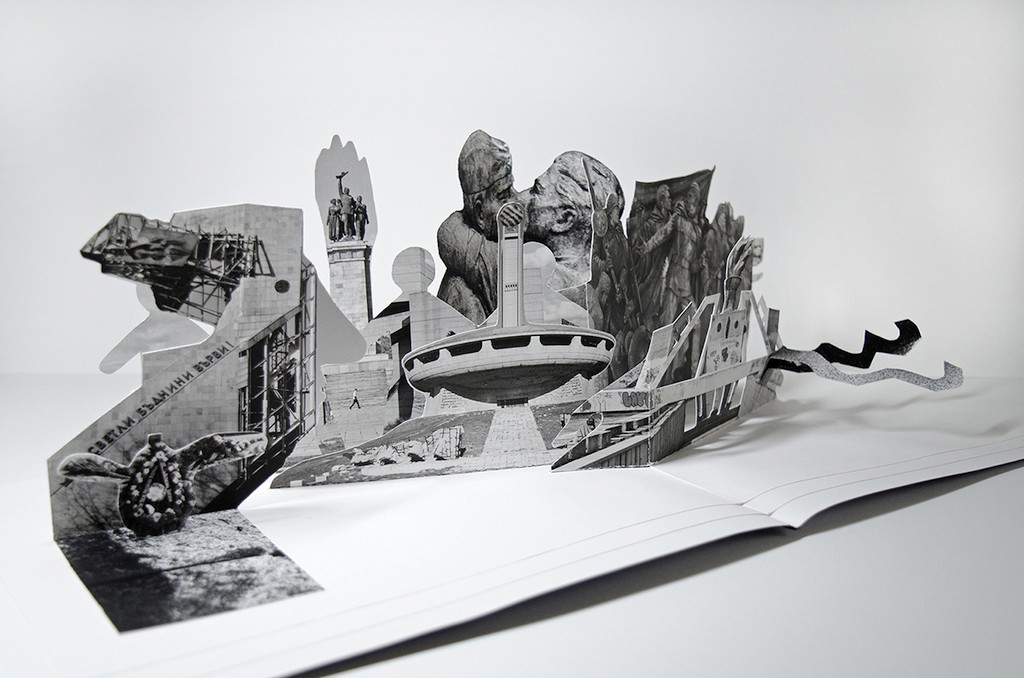PopUp Past, 2017
digital print, cardboard, glue, handmade
Object Pop-up Book
variable dimensions, max. 68 x 28 x 19 cm
The interpretation of the photo book “Forget Your Past” by Nikola Mihov, keeps its original format, but it being transformed into a new project called “POP-UP PAST“ with the help of the pop-up elements as a reminiscent of the children’s books from the recent past. In the Eastern Bloc countries, this type of books have enjoyed great popularity and provoked the imagination of the viewers in the still less virtualized reality. Another object, which could be perceived as a symbol of the “socialism” in the totalitarian Bulgaria, are the huge and massive monuments.
Traditionally, at the opening ceremonies, the official delegation is placed on a ground being covered by “Persian” carpet. In contrast to the pompousness of the opening ceremonies for the monuments of the totalitarian time, now they are completely abandoned and ruined. The practice of “sweeping the problems under the carpet”, which become a feature of the Bulgarian ethnopsychology and it enjoys unprecedented popularity. In the present project, beneath the carpet you will find interactive fragments of the past, details from the photographs of Nikola Mihov.
Forget Your Past, 2009 – 2012
The project Forget Your Past traces the fate of the most important communist-era monuments in Bulgaria. The title of the series is borrowed from graffiti writing over the entrance of the Bulgarian Communist Party Memorial at Mount Buzludja that poignantly illustrates the fate of the communist-era monuments in Bulgaria. Constructed at enormous expense as expressions of national pride, today most of them are looted and neglected. Whether they commemorate the feats of the Soviet Army or the April Uprising against the Ottoman rule, they all share a common fate – to be silent symbols of the forgotten past. After the political changes in 1989, a number of iconic communist-era monuments have been dismantled, but more than a hundred of them remained standing. Nevertheless, most of archives relevant to their history have been destroyed. I began my research in 2009, travelling through the country, talking to people, interviewing sculptors and architects, digging through archives, and of course, taking photographs.
Nikola Mihov, 2019



